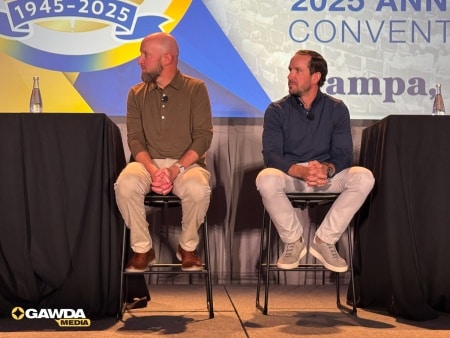The use of liquid nitrogen (LIN) in the food and beverage industry and for personal cryotherapy applications has increased significantly over the past several years. This “near consumer use” of LIN presents particular issues of safety and liability exposure for gas distributors.
Many of the major gas suppliers have stopped selling to cryotherapy facilities, citing too much risk. Other companies see this growing industry as a significant opportunity to grow their business. GAWDA members who sell to this market should be aware of the risks presented by this product, especially as customers and consumers handling LIN might lack experience and training on basic safety procedures.
If you make the business decision to sell to the industry, you need to protect yourself, here are some measure that can help:
- Consult professionals in industry specific organizations, such as CGA (SA-29 addresses Hazards of Liquid Nitrogen in Near-Consumer Applications, https://portal.cganet.com/pubs/free/SA-29_1.pdf) and GAWDA. (Please note that neither CGA nor GAWDA has taken a position on the safety of cryotherapy.)
- Pre-Qualify Customers
- Develop an evaluation procedure to identify the more experienced operators and facilities from those that present a larger risk (i.e. proper ventilation in the room the nitrogen is stored)
- Ensure your team can clearly see who is and isn’t eligible in your system
- Contractual Risk Transfer
- Develop a contract that puts the risk onto the purchaser of the product by way of indemnification language
- Include warnings in the contract
- Insurance Requirements (include in the contract)
- Require General Liability, Workers Compensation, and Umbrella coverage, with endorsements for Additional Insured status and Waivers of Subrogation
- Develop a mechanism to collect & track the certificates of insurance and evaluate their adequacy
- Provide warnings to the customer and their employees about the risk prior to purchase
- Provide training to the customer on proper usage, storage, and best practices
- Consider Special Packaging/Labels
More warnings, designed to educate and protect your customer’s customer
CGA SA-29 lists the properties of LIN and risks of its use. It is a cryogenic fluid and simple asphyxiant, and quickly turns to gas and expands at room temperature. Thus, CGA warns:
- Never use LIN in an enclosed or inadequately ventilated area or room. As the LIN rapidly turns into a gas it can quickly displace oxygen in the air and create a risk of oxygen deficiency and asphyxiation. Breathing in an oxygen-deficient atmosphere can lead to lightheadedness, unconsciousness, or even death in only a few breaths. Because nitrogen gas and LIN are odorless, air monitoring is recommended to detect oxygen-deficient atmospheres.
- Never trap LIN in an enclosed container not designed for this purpose. As the liquid warms, the pressure rises, and containers that are not equipped with an adequate means of venting can rupture catastrophically.
- Never consume LIN directly. Even a small amount of LIN, when ingested, will expand significantly inside the body to potentially dangerous levels and cause cryogenic burns and other serious injury.
In addition, SA-29 states LIN is an extremely cold liquid and can burn or freeze body tissue quickly.
- LIN and its associated cold vapors can quickly burn skin, eyes, and tissue if direct contact is made. Care should be taken to prevent direct contact with the skin and to protect the body from splashing or spraying of liquid or cold vapors by use of appropriate personal protective equipment (PPE).
- LIN must never be ingested directly or be allowed to come in contact with flesh, unless administered by a physician. LIN and its very cold vapors can freeze tissue, especially delicate tissue such as the mouth, esophagus, and stomach, causing permanent damage.
A recent informal survey of GAWDA distributors found that 60% of the respondents were selling LIN with some sort of risk mitigation plan, 20% were selling with no pre-qualification of customers, and 20% were avoiding selling in this market. If you decide to take on this risk you should consult with your insurance carrier and an attorney to develop contractual terms, warnings and coverage requirements to protect your company. You should also develop and provide to all LIN customers training on the proper usage, storage, and best practices for handling the product.



